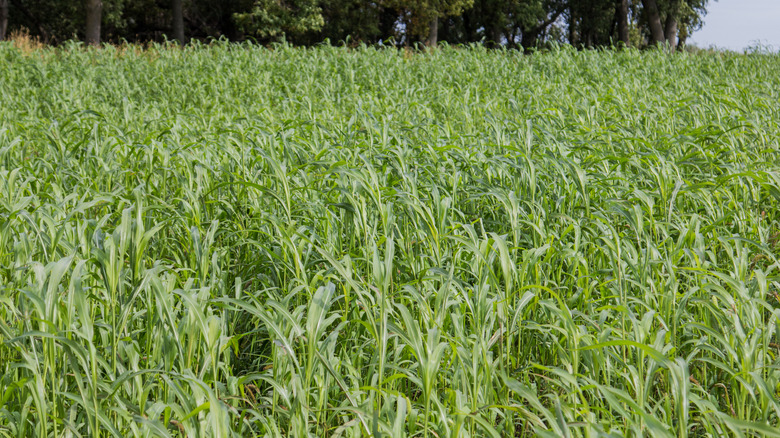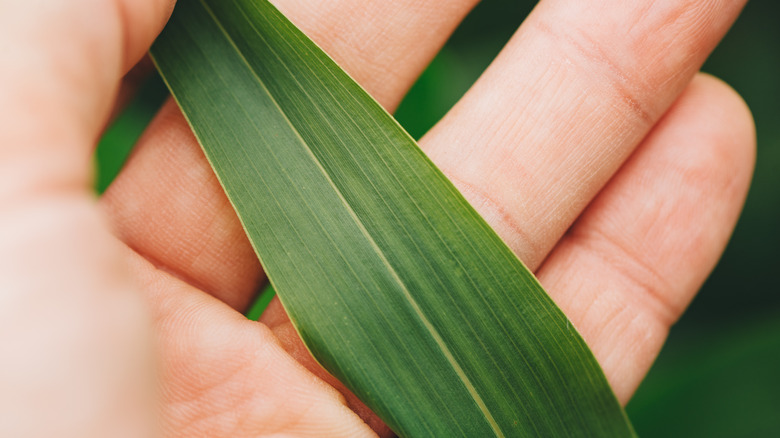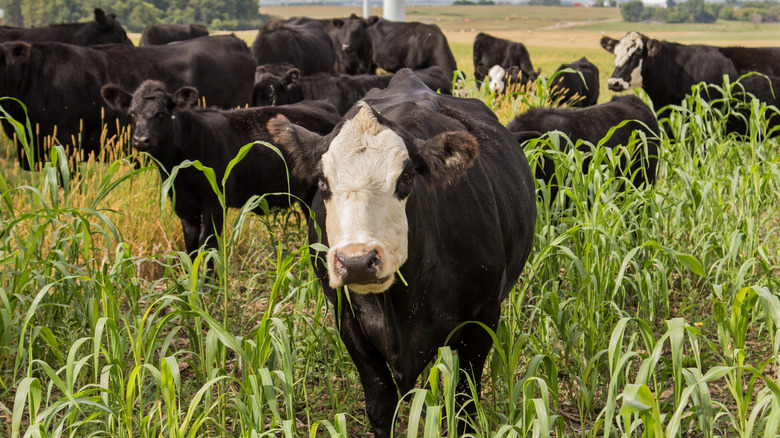Keep Problematic Weeds Out Of Your Garden With One Fast-Growing Cover Crop
Cover crops are unsung heroes for farmers and vegetable gardeners around the world, thanks to the incredibly long list of benefits they provide to the garden. Apart from reducing soil erosion, adding nutrients to the soil, and enhancing its quality, there are various cover crops that will also help suppress weeds in your garden. Sorghum-sudangrass (Sorghum x drummondii), a cross between forage sorghum and sudangrass, is one such crop, that grows at a rapid pace, performs in heat- and drought-prone locations, and most importantly, is as effective in controlling weed population as a synthetic herbicide.
Sorghum-sudangrass, commonly known as Sudex, is a plant that loves high temperatures and is often grown for forage production. This plant will stun you with its incredible rate of growth by growing a foot tall within the first week of planting, and subsequently, growing as tall as 5 to 12 feet within the next couple of months. Apart from acting as excellent weed suppressants, the crop will also prove to be beneficial for your garden's soil and ecosystem in a variety of other ways. For instance, sorghum-sudangrass loosens up compact soil and adds organic matter per acre at a lower seed cost than any other cover crop. Additionally, this is one of the fast-growing cover crops pathogenic nematodes stand no chance against, since it releases nematicidal chemicals against pest varieties and increases the population of beneficial nematodes in their place.
Sorghum-sudangrass smothers weeds like velvetleaf & crabgrass
Sorghum-sudangrass varieties work as excellent smother crops and are extremely potent against a number of annual weeds, such as velvetleaf, common ragweed, large crabgrass, barnyard grass, and the like. The allelopathic compound secreted by the roots of this plant, called sorgoleone, is found to be as potent as certain synthetic herbicides, even at super low concentrations. In fact, according to a study published in Agrosystems, Geosciences and Environment, planting sorghum-sudangrass as a companion crop with alfalfa suppressed the growth of weeds by more than 60% in comparison to non-weeded control treatment, although the crop had a detrimental effect on the alfalfa yield as well.
Apart from the roots, several other parts of the plant, such as shoots, leaves, and seedlings also secrete similar allelochemicals, which makes this plant an absolute must-have in your organic arsenal to get rid of weeds in your garden. Besides directly suppressing them, sorghum-sudangrass also outcompetes weeds for nutrients, water, and sunlight. For instance, when it grows to full height, it forms a canopy that can shade out any weed that falls in the vicinity of the plant. All you need to do on your part is make sure the herb does not face any early competition from weeds at the time of sowing, say, by using herbicides to establish a weed-free seedbed.
Precautions when growing sorghum-sudangrass
Distributed worldwide, sorghum-sudangrass is ideally suited for loam soil with a neutral ph. Having said that, as long as the pH of the soil does not drop below 5.5, the crop should perform well. Apart from choosing the right the soil type, you also need to make sure that you are well past the last frost date at the time of planting, since frost can be extremely damaging to this plant's growth. Plant the seeds at a depth of around half an inch in a moist seed bed to make sure it meets the necessary moisture requirements. Managing the crop can get difficult when it grows beyond 4 feet, as the stalks start becoming more fibrous and woody. Therefore, it is best to keep mowing the crop around that height to keep it succulent and manageable. Late spring and early summers are the best time for planting for maximizing biomass.
A major precaution to keep in mind while growing sorghum-sudangrass is the possibility of prussic acid poisoning and nitrate poisoning, particularly if you have grazing animals. The plant contains a compound called dhurrin, which gets converted into prussic by the chewing action of cattle or in the event of droughts or frost, and this can prove fatal for the animals feeding on the crop. Similarly, nitrate accumulation can occur in the plant in drought or cloudy weather, which can interfere with the animals' oxygen-carrying ability.


